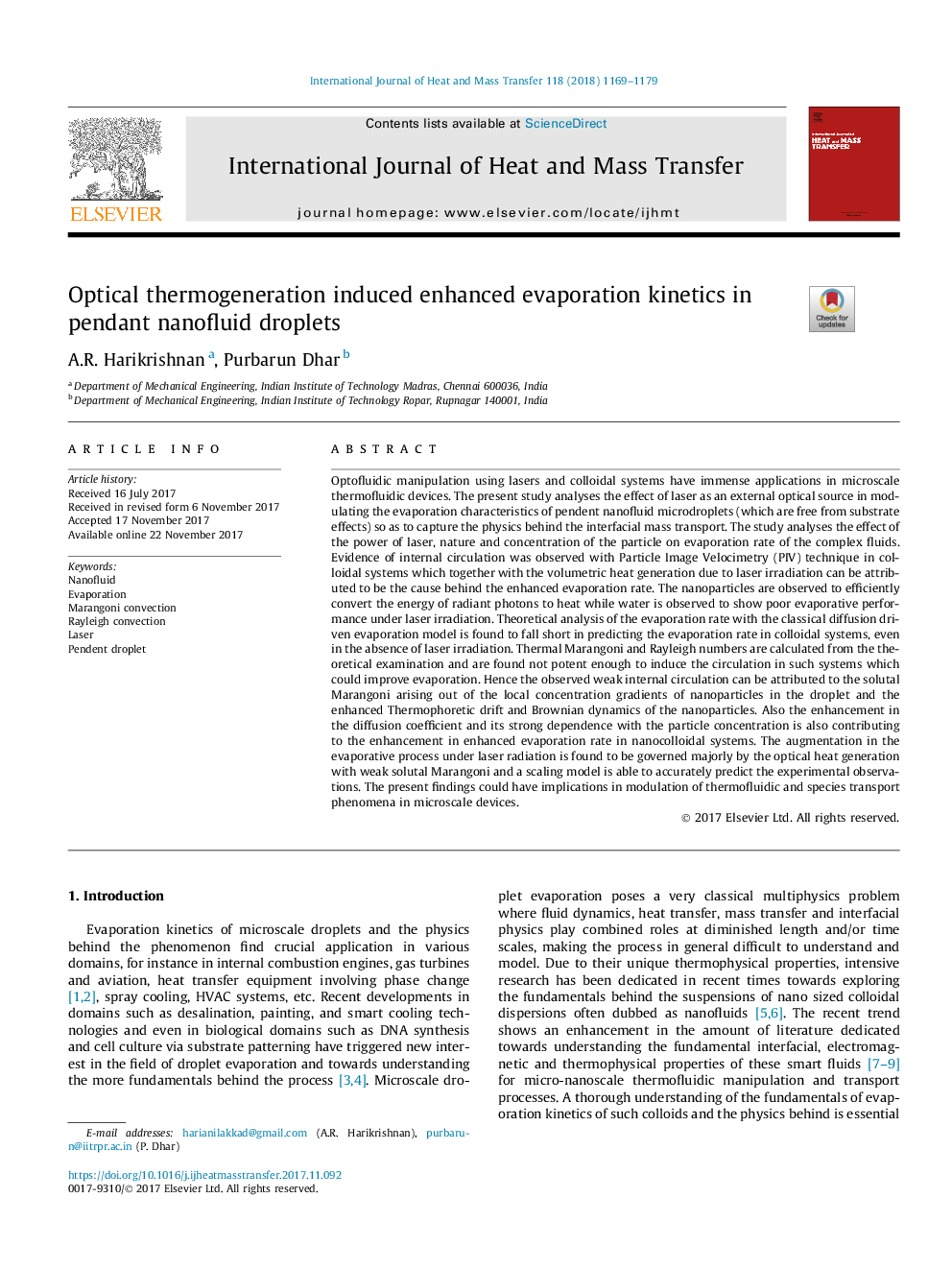| Article ID | Journal | Published Year | Pages | File Type |
|---|---|---|---|---|
| 7054831 | International Journal of Heat and Mass Transfer | 2018 | 11 Pages |
Abstract
Optofluidic manipulation using lasers and colloidal systems have immense applications in microscale thermofluidic devices. The present study analyses the effect of laser as an external optical source in modulating the evaporation characteristics of pendent nanofluid microdroplets (which are free from substrate effects) so as to capture the physics behind the interfacial mass transport. The study analyses the effect of the power of laser, nature and concentration of the particle on evaporation rate of the complex fluids. Evidence of internal circulation was observed with Particle Image Velocimetry (PIV) technique in colloidal systems which together with the volumetric heat generation due to laser irradiation can be attributed to be the cause behind the enhanced evaporation rate. The nanoparticles are observed to efficiently convert the energy of radiant photons to heat while water is observed to show poor evaporative performance under laser irradiation. Theoretical analysis of the evaporation rate with the classical diffusion driven evaporation model is found to fall short in predicting the evaporation rate in colloidal systems, even in the absence of laser irradiation. Thermal Marangoni and Rayleigh numbers are calculated from the theoretical examination and are found not potent enough to induce the circulation in such systems which could improve evaporation. Hence the observed weak internal circulation can be attributed to the solutal Marangoni arising out of the local concentration gradients of nanoparticles in the droplet and the enhanced Thermophoretic drift and Brownian dynamics of the nanoparticles. Also the enhancement in the diffusion coefficient and its strong dependence with the particle concentration is also contributing to the enhancement in enhanced evaporation rate in nanocolloidal systems. The augmentation in the evaporative process under laser radiation is found to be governed majorly by the optical heat generation with weak solutal Marangoni and a scaling model is able to accurately predict the experimental observations. The present findings could have implications in modulation of thermofluidic and species transport phenomena in microscale devices.
Related Topics
Physical Sciences and Engineering
Chemical Engineering
Fluid Flow and Transfer Processes
Authors
A.R. Harikrishnan, Purbarun Dhar,
